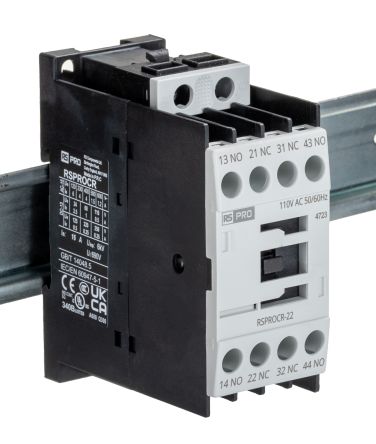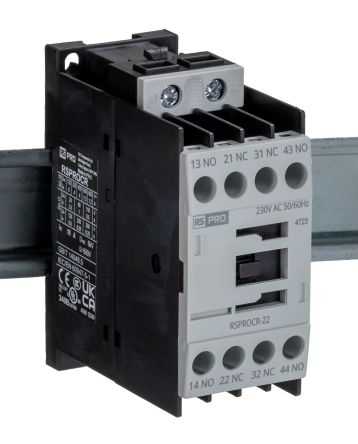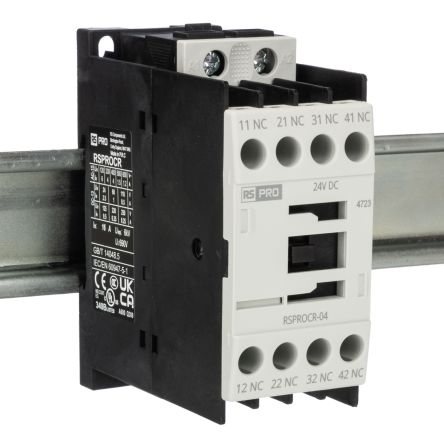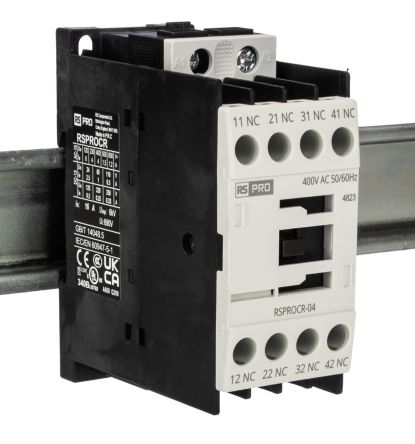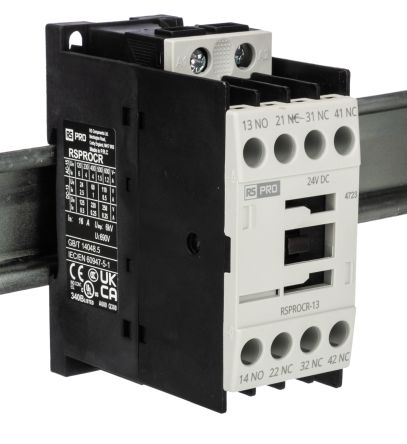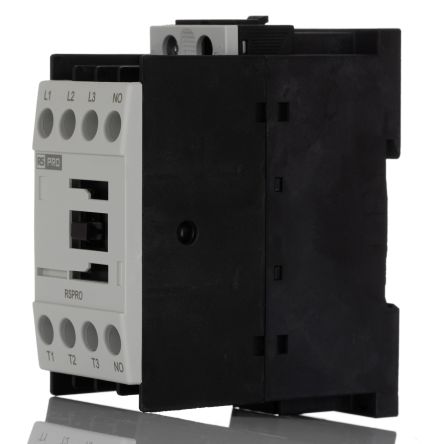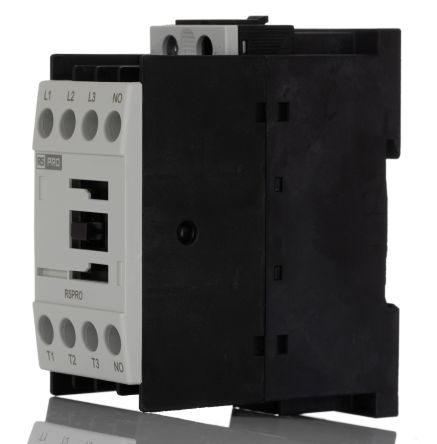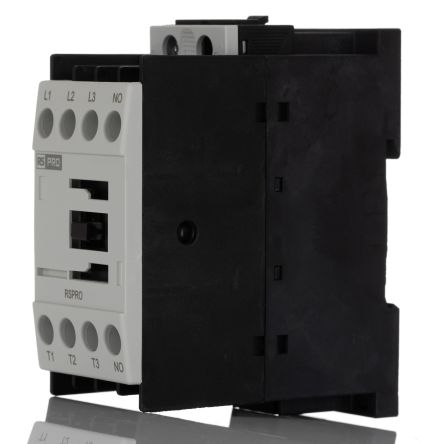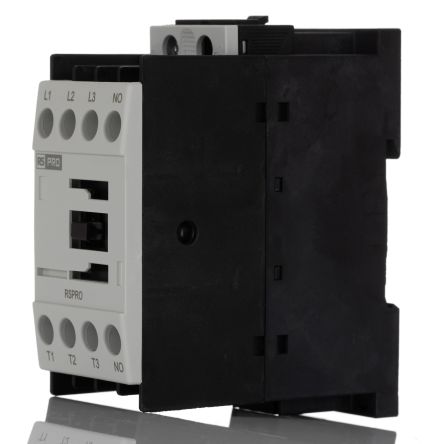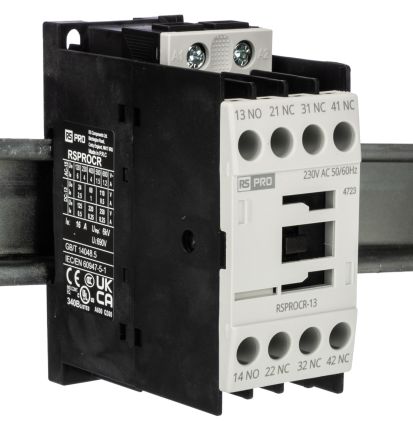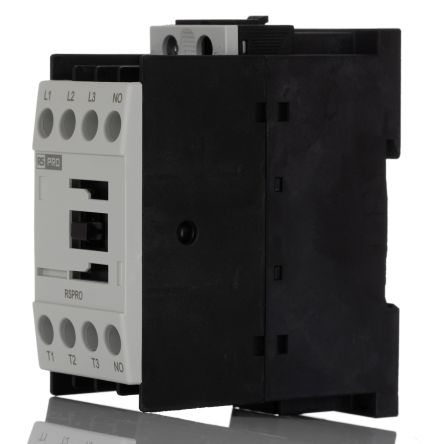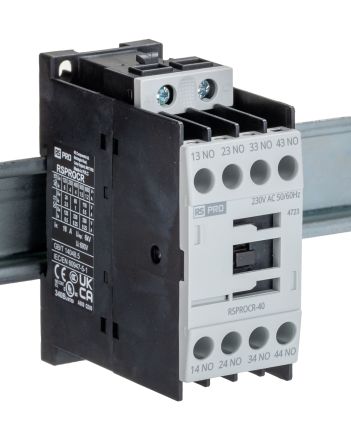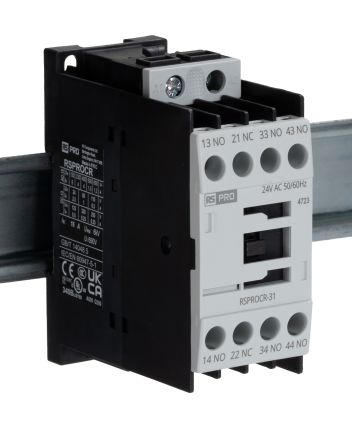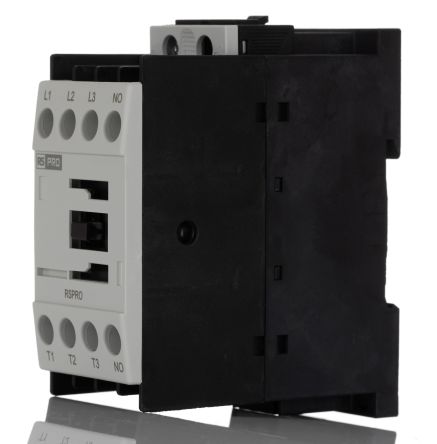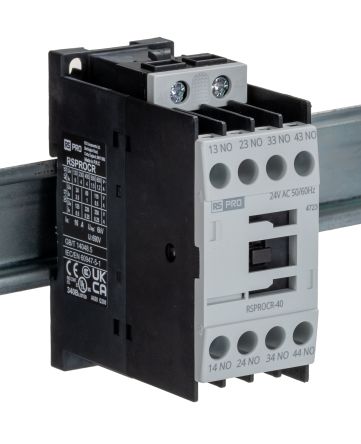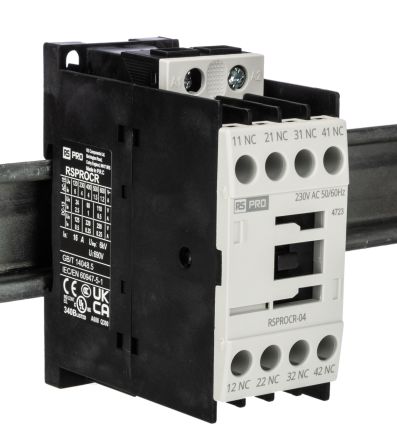- Automation & Control Gear
- Cables & Wires
- Enclosures & Server Racks
- Fuses & Circuit Breakers
- HVAC, Fans & Thermal Management
- Lighting
- Relays & Signal Conditioning
- Switches
- Batteries & Chargers
- Connectors
- Displays & Optoelectronics
- ESD Control, Cleanroom & PCB Prototyping
- Passive Components
- Power Supplies & Transformers
- Raspberry Pi, Arduino, ROCK, STEM Education & Development Tools
- Semiconductors
Single pole contactors
In simple terms, a contactor, contactor switch or contactor relay is a device designed for switching an electrical circuit on or off. They are part of the relay family, but the main difference is that a contactor is used in applications with higher current capacity is involved. Contactors are typically used for motors, lighting circuits, heating, and other electrical loads. A contactor can function on its own or as a power control device or as part of a motor starter. You can find out more in our comprehensive contactors guide.
RS offer a comprehensive range of high-quality electrical contactors from industry-leading brands including Schneider Electric, Siemens, Eaton, ABB, and Allen Bradley. We also stock a selection of accessories used to enhance the function of the contactor including, Contactor Overload Relays, auxiliary contacts, mechanical interlocks, and much more.
What are electrical contactors?
Designed to be connected to high-current load devices, contactors incorporate spring-loaded contacts that make or break power supply lines to a load. These contacts are designed to open and close very rapidly to assist with arc suppression, ensuring the contactor's ability to interrupt heavy motor currents with minimal damage over a longer life cycle. In any device that is frequently turned off and on, a contactor is often employed, and different contactor configurations are designed for different current requirements. From uses in basic light switches to complex applications such as controlling electromagnets, contactors are highly versatile.
How do contactors work?
Contactors, unlike standard relays, are specifically designed to connect to high current load devices. Used in larger-scale control circuit applications, a contactor is a switch that can be controlled remotely, specifically designed to switch a large amount of electrical power through its contacts. If a device can switch more than 10 amperes, it is called a contactor. These devices also feature high coil voltages which are rare within relays.
Contactor Specifications
There are various types of contactors, and each type will have its own set of specifications depending on your application. Some key specifications are
- AC Contactor or DC Contactor with coils including 12 V, 24 V, 48 V, 110 V, 240 V, 400 V, and 440 V.
- Reversing or non-reversing functionality.
- AC3 and AC1 categories
- Contactors with 2 poles, 3 poles 4 poles, and even 8 and 10 pole variants.
- Various contact configurations.
- IEC standards
Explore the new look of the category page
Popular Searches
- Lighting Contactors
- 12v contactors
- 2 Pole Contactors
- ABB Jokab Contactors
- Allen Bradley Contactors 100 series
- Single pole contactors
- safety contactors
- Sensata / Crydom Contactors
- durakool contactors
- europa contactors
- finder contactors
- omron contactors
- phoenix contact contactors
- te connectivity contactors
- weg contactors
